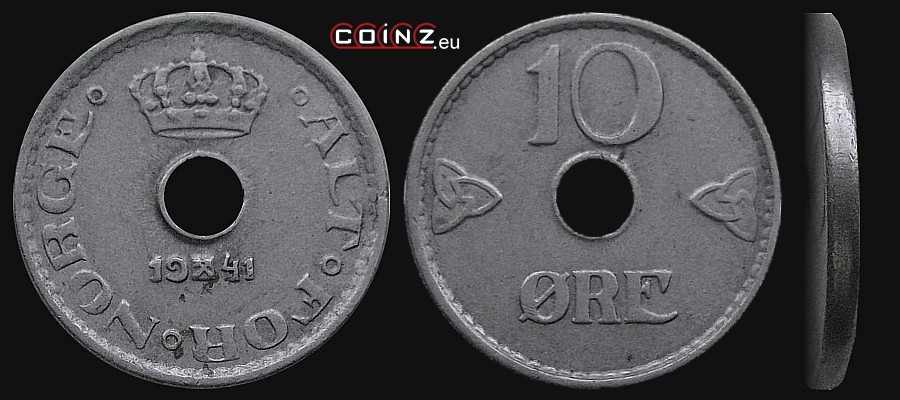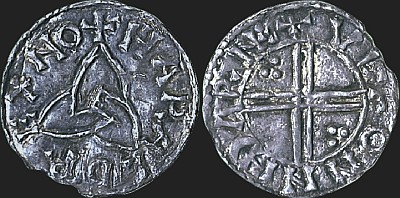10 øre NORWAY (1924-1951)


| diameter: | weight: | thickness: | alloy: | hole: |
| 15.0 mm | 1.5 g | 1.3 mm | Cu75Ni25 | 3.0 mm |
obverse:
above the hole a royal crown; below year of issue divided by a mint mark; along the edge: • ALT • FOR • NORGE • (All for Norway); at the edge ring of semi-circles
reverse:
above the hole face value: 10, below: ØRE; a triquetra on each side of the hole; at the edge ring of semi-circles
edge:
plain
issue date:
??? no data
withdrawal date:
1 III 1993
designer:
??? no data
mint:
 Den Kongelige Mynt (The Royal Mint), Kongsberg (mint mark divides the issue date on the obverse)
Den Kongelige Mynt (The Royal Mint), Kongsberg (mint mark divides the issue date on the obverse)
mintage:
| 1924 | 12 079 100 |
| 1925 | 7 050 700 |
| 1926 | 11 764 200 |
| 1927 | 526 000 |
| 1937 | 5 000 000 |
| 1938 | 3 412 600 |
| 1939 | 1 538 400 |
| 1940 | 4 800 000 |
| 1941 | 10 150 000 |
| 1945 | 1 718 000 |
| 1946 | 3 723 200 |
| 1947 | 7 256 700 |
| 1948 | 3 104 500 |
| 1949 | 11 545 500 |
| 1951 | 5 150 000 |
interesting facts:
Triquetra is a an ambiguous symbol found on Viking rune stones. This particular design of triquetra comes from a penny of King of Norway Harald Hardrada minted in Nidarnes (Trondheim) in the years 1047-1066. Harald Hardrada was the founder of the Norwegian monetary system. His policy of unification of currency caused a complete removal of foreign coins from Norway.

www.dokpro.uio.no

www.dokpro.uio.no
last update: 31 V 2014
coins catalogue :: katalog monet :: münzkatalog :: catalogue de monnaies :: catálogo de monedas :: catalogo monete :: каталог монет :: κέρματα κατάλογος :: COINZ.eu
© 2010-2025 :: Adam Kubicki :: COINZ.eu :: All rights reserved.


